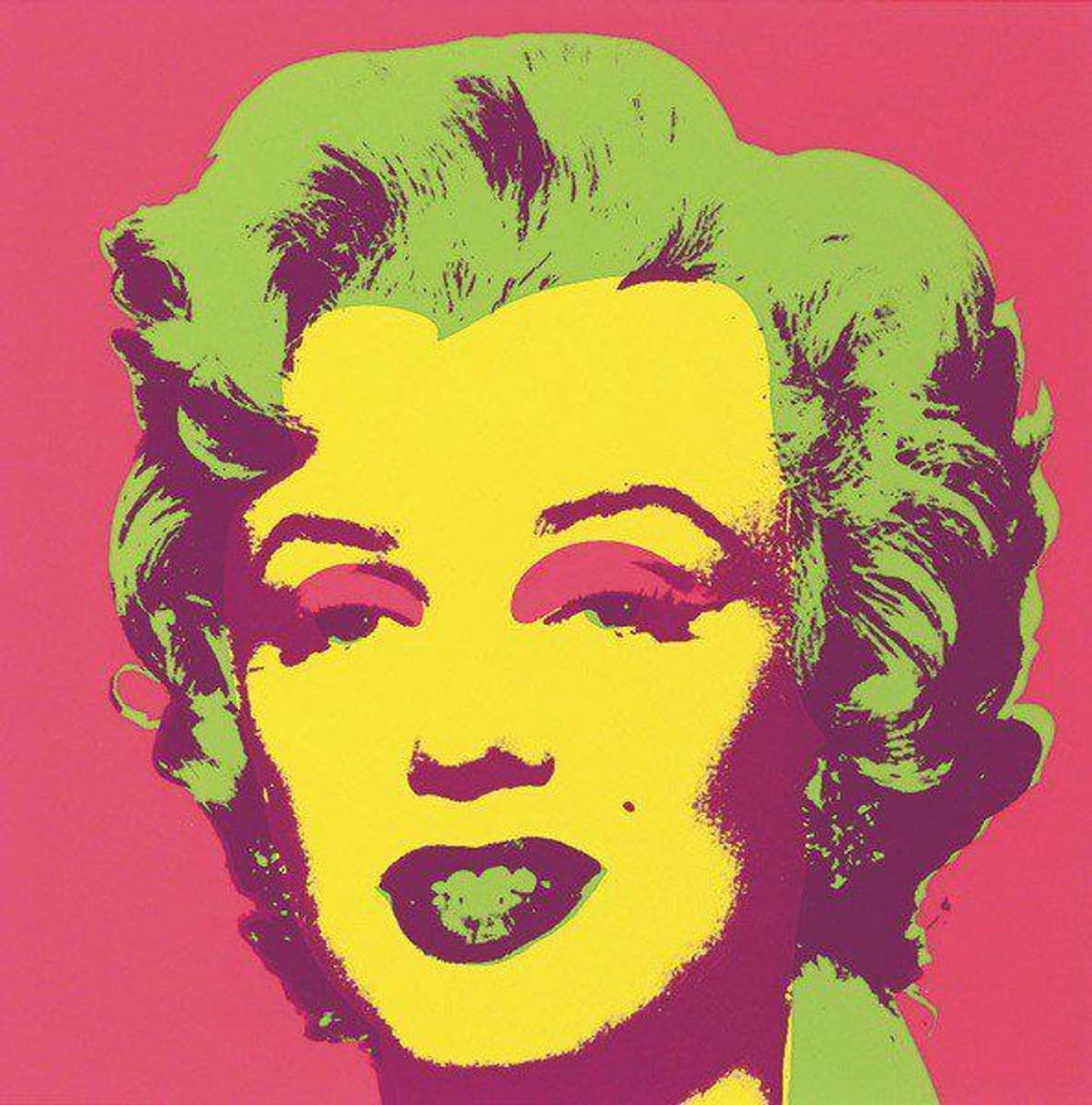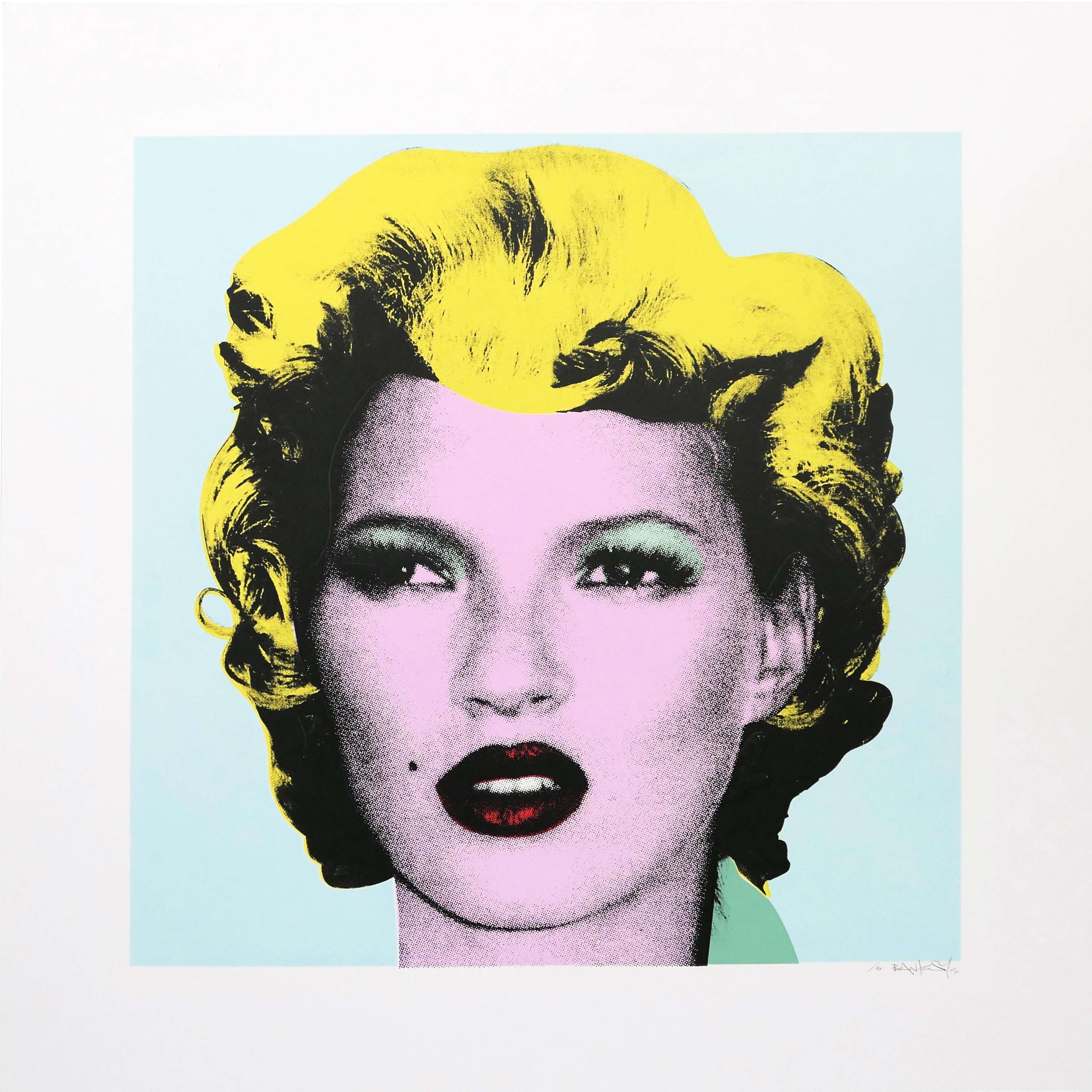Andy Warhol’s Marilyn Monroe: The Most Famous Face in Hollywood History?

 Marilyn (complete set) © Andy Warhol 1967
Marilyn (complete set) © Andy Warhol 1967
Interested in buying or selling
Andy Warhol?

Andy Warhol
487 works
In the world of pop culture, few figures are as iconic as Andy Warhol and Marilyn Monroe. Warhol, the undisputed king of Pop Art, had an uncanny ability to capture the zeitgeist of the age, turning ordinary objects and personalities into lasting symbols. Monroe, Hollywood's ultimate pin-up, epitomised timeless beauty and tragedy in equal measure. These qualities made her an ideal subject for Warhol, who was fascinated by fame and the media. The combination of style and celebrity further catapulted Marilyn's face into public consciousness, contributing to her status as one of the most famous faces in Hollywood history.
Warhol and Monroe: The Fusion of Two Icons
Warhol began his career as a commercial illustrator in New York before quickly transitioning into the world of fine art. He was fascinated with fame and Hollywood, a theme he chased in his personal life and was reflected in his art. His work challenged traditional boundaries of high and low art, and asked pressing questions about commercialism, celebrity culture and the very nature of art itself.
Born Norma Jeane Mortenson, Marilyn Monroe's transformation into one of the most recognisable figures in Hollywood history is a testament to the power of reinvention and branding in the mid-20th century. Her platinum blonde hair, red lips and sultry voice made her an emblem of 1950s glamour. Yet, beneath the veneer of success lay a complex woman, grappling with personal demons and the pressures of fame. Monroe's untimely death in 1962 only solidified her status as a Hollywood legend, her allure a mix of beauty, talent and the everlasting human fascination with tragedy – one which Warhol was not immune to.
Warhol never met Marilyn, but first decided to capture her face just after she passed away at the age of 36. Using a publicity photograph from the 1953 film Niagara, he returned to her likeness two years later in 1964, after developing a new method of colour-layering. It was then that he created his five most iconic Marilyns, which would become known as the Shot Marilyns. The public's insatiable appetite for celebrity, the thin line between adoration and exploitation and the juxtaposition of surface glamour with underlying darkness were all themes implicit in these works. She became a symbol of the American dream and its pitfalls, and of the relentless machinery of fame.
Both Warhol and Monroe were emblematic of their decades, and the eventual convergence of Marilyn and Warhol's art was not just a meeting of two icons. Rather, it was a fusion that encapsulated an era's obsessions and anxieties.
 Image © Public Domain / Publicity portrait of Marilyn Monroe as Rose Loomis in the 1953 film Niagara.
Image © Public Domain / Publicity portrait of Marilyn Monroe as Rose Loomis in the 1953 film Niagara.The Shot Marilyns: A Foreshadowing of Warhol's Life
Art often mirrors life but, occasionally, it can eerily presage it. In 1964, Warhol was dedicated to developing his new technique in screenprinting, which is evident in the Marilyn series. For these particular works, Warhol's method involved placing acetate silkscreens over canvases and using a squeegee to push paint through the mesh. The technique allowed for vivid colour juxtaposition and a mechanical appearance; this emphasised its mass-produced aspect. Some of the most important works in Warhol's entire oeuvre – and, indeed, in the whole history of art – the Shot Marilyns gained their name from an incident that uncannily foreshadowed the way that Warhol's own life would change only a few years later.
In the autumn of 1964, a performance artist named Dorothy Podber walked into The Factory and asked to "shoot" the works. Reasonably assuming that she meant to do so with a camera, Warhol consented. Podber then pulled out a small pistol from her handbag and put a bullet through a stack of silk-screens of Marilyn, hitting them "right between the eyes". The bullet only went through four of them, and Podber was banned from the Factory for life.
The act of shooting the Marilyns would take on an additional layer of meaning in 1968 when Warhol himself was shot at The Factory by Valerie Solanas, a self-proclaimed radical feminist writer and activist. Having had prior interactions with Warhol, including giving him a script she had written, Solanas felt slighted and believed Warhol intended to steal her work. Though Warhol survived, the shooting severely impacted his health and psyche for the rest of his life.
In spite of this dark history, the Shot Marilyns have ranked amongst the most expensive paintings ever sold. In 2022, Shot Sage Blue Marilyn sold for $195 million at Christie's, becoming the most expensive 20th-century artwork ever sold.
Warhol's Hollywood Enigma: Is Monroe the Ultimate Face of Fame?
Warhol's choice to depict Marilyn was not arbitrary. In merging his commercially-attuned methodology with her iconic image, Warhol provided an artistic mirror to society's fixations. Her ethereal beauty combined with her tragic life story created a narrative that transcended Hollywood's reach, while Warhol's repetitive colourful renditions of her face further immortalised her. In this way, Marilyn was turned into a symbol – of beauty, of sex, of tragedy and of the consequences of the relentless glare of the public eye. Marilyn's face has become so iconic that it is easily recognisable even in fractions: Warhol also created an artwork called Marilyn I Love Your Kiss Forever Forever, where the actress' lips are isolated and reproduced.
Warhol's mass-produced aesthetic was also reminiscent of the way Hollywood stars were 'manufactured' at the time. In order to become an icon, Marilyn had to mould herself to the expectations of the studio and the public, changing her name, dyeing her hair and creating a distinct persona altogether. The actress once stated: "I never wanted to be Marilyn – it just happened. Marilyn's like a veil I wear over Norma Jeane."
Marilyn's life and career redefined the concept of fame and success in the 20th-century. Fully in control of her public persona, she played into stereotypes and courted media attention. As the top-billed actress for a decade, she is credited for creating and perfecting the concept of the blonde bombshell, and her personal life was the subject of endless speculation. Still widely admired and the source of inspiration for many celebrities today, her likeness endlessly reproduced, Marilyn remains the face of contemporary fame.
Legacy and Timelessness: Warhol and Marilyn in Contemporary Discourse
The intersection of Warhol and Monroe in art is a cultural touchstone that continues to reverberate in contemporary discourse. Their collaboration on canvas encapsulated the zeitgeist of the mid-20th century, but the legacy they left behind has been a fertile ground for contemporary artists to explore, reinterpret and reinvent.
Banksy's Modern Muse: From Marilyn to Kate Moss
Banksy, the enigmatic and world-renowned street artist, has never been one to shy away from repurposing iconic images to make contemporary statements. Drawing inspiration from Warhol's Marilyns, Banksy replaced Monroe with another face synonymous with modern fame and fashion: supermodel Kate Moss. In doing so, he paid homage to Warhol's commentary on celebrity and updated it for a new generation. By juxtaposing Moss — a figure as emblematic of the early 21st century as Monroe was of the 1950s — Banksy prompts viewers to reflect on the evolving nature of celebrity and the cyclical patterns of fame.
Mr. Brainwash: Remixing an Icon
Another artist who has taken Warhol's iconic Marilyn and added his own contemporary spin is Thierry Guetta, popularly known as Mr. Brainwash. Operating in the realm of pop art, much like Warhol himself, Mr. Brainwash playfully remixes and reinterprets famous artworks. When approaching Warhol's Marilyn, he infuses it with his own unique style, incorporating graffiti and crystals, or repurposing the imagery and changing the subject altogether.
The Evergreen Allure of Warhol and Marilyn
The continuous reinterpretation of Warhol's Marilyn Monroe series is a testament to its enduring relevance. Every artist who revisits this iconic collaboration grapples with the same themes Warhol did: the construction of fame, the commodification of beauty and the intersection of art and popular culture. Yet, each new iteration also offers fresh insights, reflecting the ever-changing cultural landscape. The timelessness of Warhol and Monroe's legacies cannot be overstated, proving that true icons never fade — they simply evolve.







